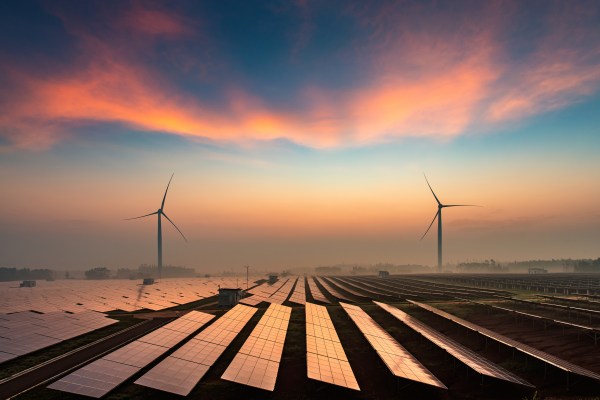By Jenny Gerson, senior director of sustainability for DataBank
Data Centers with Net Zero Emissions
Data centers with net zero emissions
From individuals to large enterprises, we all need to focus on sustainability. Environmental stewardship must win the day to preserve our planet’s natural resources.
For many colocation data centers, the quest for sustainability emphasizes achieving net zero emissions. In accordance with The Paris Agreement, the United Nations Intergovernmental Panel on Climate Change (IPCC) outlines that a science-based approach to net zero includes aligning with mitigation pathways to limit global warming by 1.5 degrees Celsius.
**********
According to the United Nations Intergovernmental Panel on Climate Change (IPCC):
“Net zero carbon dioxide (CO2) emissions are achieved when anthropogenic (human-made) CO2
emissions are balanced globally by anthropogenic CO2 removals over a specified period.”
**********
The IPCC acknowledges the pathways to net zero include transitioning from fossil fuels to very low-carbon or zero-carbon energy sources. These include renewables or fossil fuels with carbon capture and sequestration technology. The IPCC also recommends improving efficiencies with demand-side measures, reducing non-CO2 emissions, and deploying carbon dioxide removal methods to counterbalance residual greenhouse gas emissions.
Emissions Baselining
The path to achieve net zero starts with compiling and tracking emissions data to develop a baseline of emissions that an organization is responsible for. This baseline of emissions includes three scopes:
Scope 1—direct emissions produced onsite
Scope 2—emissions from purchased electricity
Scope 3—emissions produced by upstream and downstream inputs (suppliers and customers)
When looking at all emissions across companies and the world, one company’s scope 1 emissions will be another company’s scope 2. Similarly, a company’s scope 2 emissions will be another company’s scope 3 emissions. Across the three scopes, organizations may double-count or even triple-count each other’s emissions. However, the purpose at the company level is to account for all emissions the company is responsible for across its value chain. Here at DataBank, spanning our portfolio of data centers, we have set a corporate goal to achieve net zero for scope 1 and scope 2 emissions by 2030. This is in line with the IPCC mitigation pathway.
Where to Focus Net Zero Mitigation Strategies
Science-based net zero mitigation strategies should focus on minimizing the amount of carbon emissions in business activities. This starts by transitioning to zero-carbon or low-carbon fuel sources, utilizing energy-efficient technologies, and implementing operationally efficient practices.
Once you minimize emissions from business activities, you can then turn to purchasing or generating renewable power. These include wind, solar, hydro, geothermal, and biomass—as well as nuclear, a zero-carbon source of power. From there, purchasing high-quality removals for residual hard-to-abate emissions can get you to net zero.
4 Steps for Reducing Carbon Emissions
Step 1: Increase Operational Efficiencies
For the first step to net zero, identify operational inefficiencies and implement no or low-carbon technologies. As examples, data center providers can follow these best practices:
- Upgrade equipment to newer gear that runs more efficiently.
- Optimize airflow by utilizing building management systems to control HVAC systems, adding hot or cold air containment aisles, and making sure any holes are patched. This sounds simple, but leaks drive up energy usage.
- Evaluate lighting. Replace fluorescent lights with LEDs and install motion sensors to turn on lights only when people enter an area.
- Adjust temperature set points. Ten years ago, providers kept their data centers much cooler. However, as servers and networking gear evolve, they can run safely at higher temperatures.
Also, use efficient cooling technologies such as rear-door air heat exchangers, liquid-based cooling delivered close to CPUs, or immersive cooling. All of these can drastically change the emissions from a data center while consuming water for cooling and reducing the reliance on refrigerants.
Step 2: Generate Renewable Energy and Use Zero Carbon Power On-Site
Examples of options for generating renewable energy onsite include wind, solar photovoltaic (PV) systems, and even geothermal installations. You can pair wind and solar PV with large-scale batteries for energy storage that enables storing power to address intermittency concerns of these renewable sources.
Given the scale of power usage in data centers, it’s unlikely on-site renewable generation from wind or solar PV plus storage solutions will cover the entire load. However, this still allows for load shifting for peak demand on the grid, which historically required the use of dirtier sources of power.
Emerging technologies can help too. Power sources that could offer alternatives to natural gas include green hydrogen and methane. In addition, some data center operators, including DataBank, look for opportunities to replace diesel fuel—by powering generators with hydrotreated vegetable oil.
Further, a newer source of power that’s available in some markets — but not yet in the US — are Small Modular Reactors (SMRs), which can supply clean nuclear power. SMRs, likely, will play a part in on-site zero-carbon power for data centers.
You can then purchase the remaining power you require through power contracts for renewable or zero-carbon electricity through market-based instruments. These include Renewable Energy Certificates, Power Purchase Agreements, and Virtual Power Purchase Agreements.
Step 3: Focus on Your Value Chain
Your value chain falls within your scope 3 emissions as described above. This ties in with your Step 1 efficiency tactic of purchasing low-carbon equipment and materials. You can engage with your suppliers and customers to further mitigate both upstream and downstream emissions. This includes purchasing high-efficiency, low-carbon, or no-carbon equipment and materials, as well as working with vendors who also align with your sustainability goals.
Other tactics focus on working with suppliers and customers on updated servers, airflow optimization projects, and renewable power for the services you consume and deliver as part of your business relationships.
Step 4: Use High-Quality Carbon Removals for Hard-to-Mitigate Emissions
Once you minimize and mitigate all sources of emissions to the extent they reasonably can be, the IPCC has identified the need for the use of high-quality carbon removals (also called offsets or credits). High-quality carbon removals should be actual, additional, and permanent reductions validated by an accredited and independent third party — per the Integrity Council for Voluntary Carbon Markets. This May, the Biden Administration issued guidance for the use of carbon removals in line with these requirements.
Success Requires Collaboration Across the Ecosystem
Adherence to net zero mitigation pathways is still voluntary across the world. Numerous organizations have set standards and frameworks to promote net zero commitments, with the Science Based Targets initiative perhaps the most well-known. Neither the standards and frameworks-based organizations — nor government regulations — have solved for net zero pathways for all types of industries. As a result, some companies turn to industry coalitions to move the needle forward.
One example is the Infrastructure Masons Climate Accord (ICA), a coalition of many digital infrastructure companies and their supply chains as members. DataBank has joined as a corporate member of the Climate Accord and participates in committees and working groups. The ICA and the Infrastructure Masons organizations bring both the data center industry and other players in digital infrastructure together to collaboratively develop tools and strategies to achieve net zero emissions.
Collaborative efforts like this are vital. To achieve net zero, it’s imperative for data center operators, their supply chain partners, and their customers to all come together. The actions of each entity impact the entire ecosystem’s mission to move closer to net zero. We can’t get there unless everyone pitches in. Even if we do, we’re not done. As the power demand soars and new energy resources emerge, there will always be more to do. DataBank is here to continue that work alongside our customers and our supply chain partners. Together, we can contribute to making the world more sustainable.







